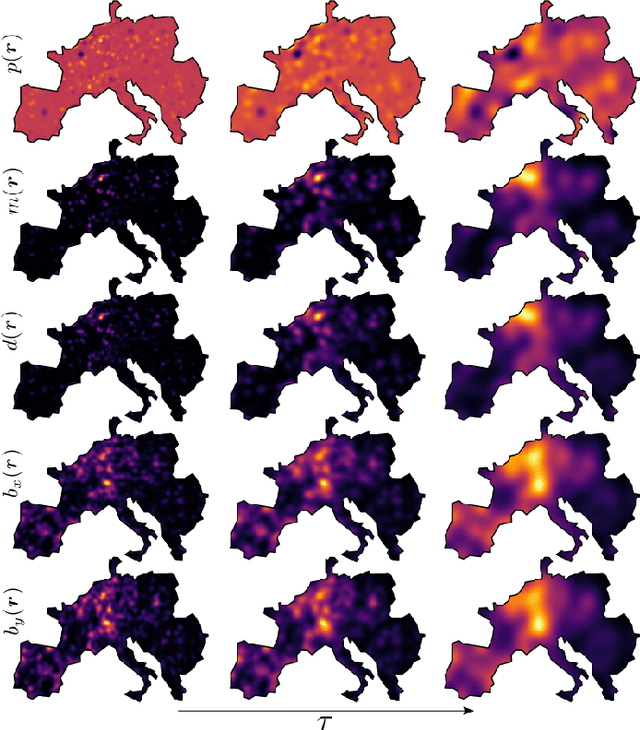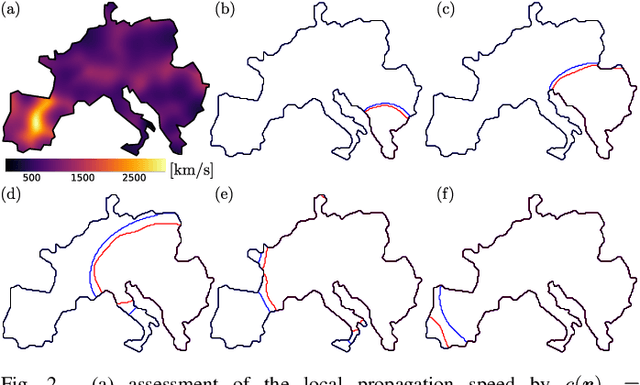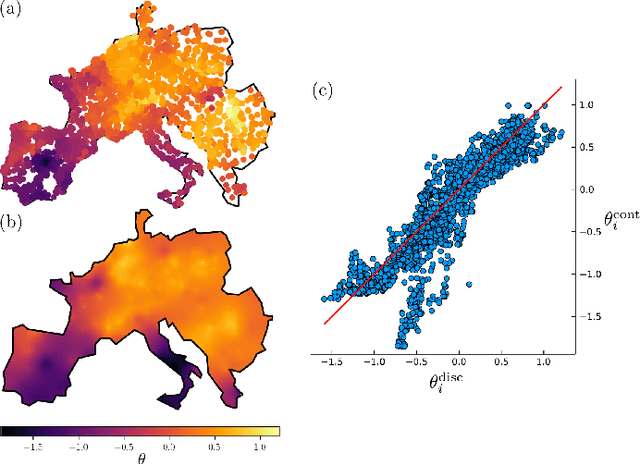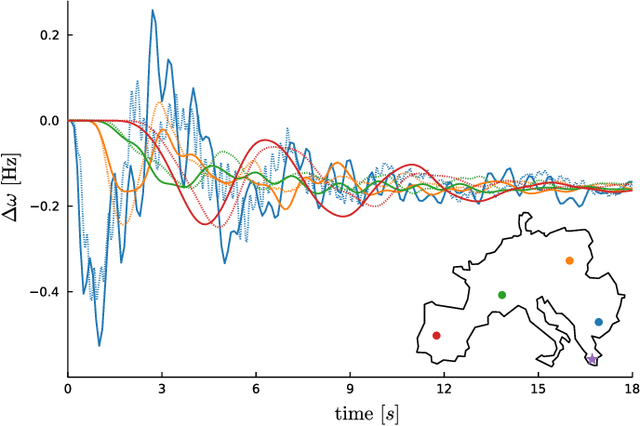Model Reduction of Swing Equations with Physics Informed PDE
Paper and Code
Oct 26, 2021



This manuscript is the first step towards building a robust and efficient model reduction methodology to capture transient dynamics in a transmission level electric power system. Such dynamics is normally modeled on seconds-to-tens-of-seconds time scales by the so-called swing equations, which are ordinary differential equations defined on a spatially discrete model of the power grid. We suggest, following Seymlyen (1974) and Thorpe, Seyler and Phadke (1999), to map the swing equations onto a linear, inhomogeneous Partial Differential Equation (PDE) of parabolic type in two space and one time dimensions with time-independent coefficients and properly defined boundary conditions. The continuous two-dimensional spatial domain is defined by a geographical map of the area served by the power grid, and associated with the PDE coefficients derived from smoothed graph-Laplacian of susceptances, machine inertia and damping. Inhomogeneous source terms represent spatially distributed injection/consumption of power. We illustrate our method on PanTaGruEl (Pan-European Transmission Grid and ELectricity generation model). We show that, when properly coarse-grained, i.e. with the PDE coefficients and source terms extracted from a spatial convolution procedure of the respective discrete coefficients in the swing equations, the resulting PDE reproduces faithfully and efficiently the original swing dynamics. We finally discuss future extensions of this work, where the presented PDE-based reduced modeling will initialize a physics-informed machine learning approach for real-time modeling, $n-1$ feasibility assessment and transient stability analysis of power systems.
 Add to Chrome
Add to Chrome Add to Firefox
Add to Firefox Add to Edge
Add to Edge